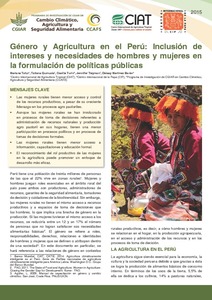Supporting Womens Agro-Enterprises in Africa with ICT
A new generation of information and
communication technologies (ICTs) is finding a small
foothold among poor, small-scale farmers in developing
countries. Even so, many barriers still prevent poor rural
people from accessing, using, and benefiting from new ICT
tools and platforms, and those barriers are arguably higher
for rural women. The relationship between gender and
agriculture has been studied intensively over the years, and




